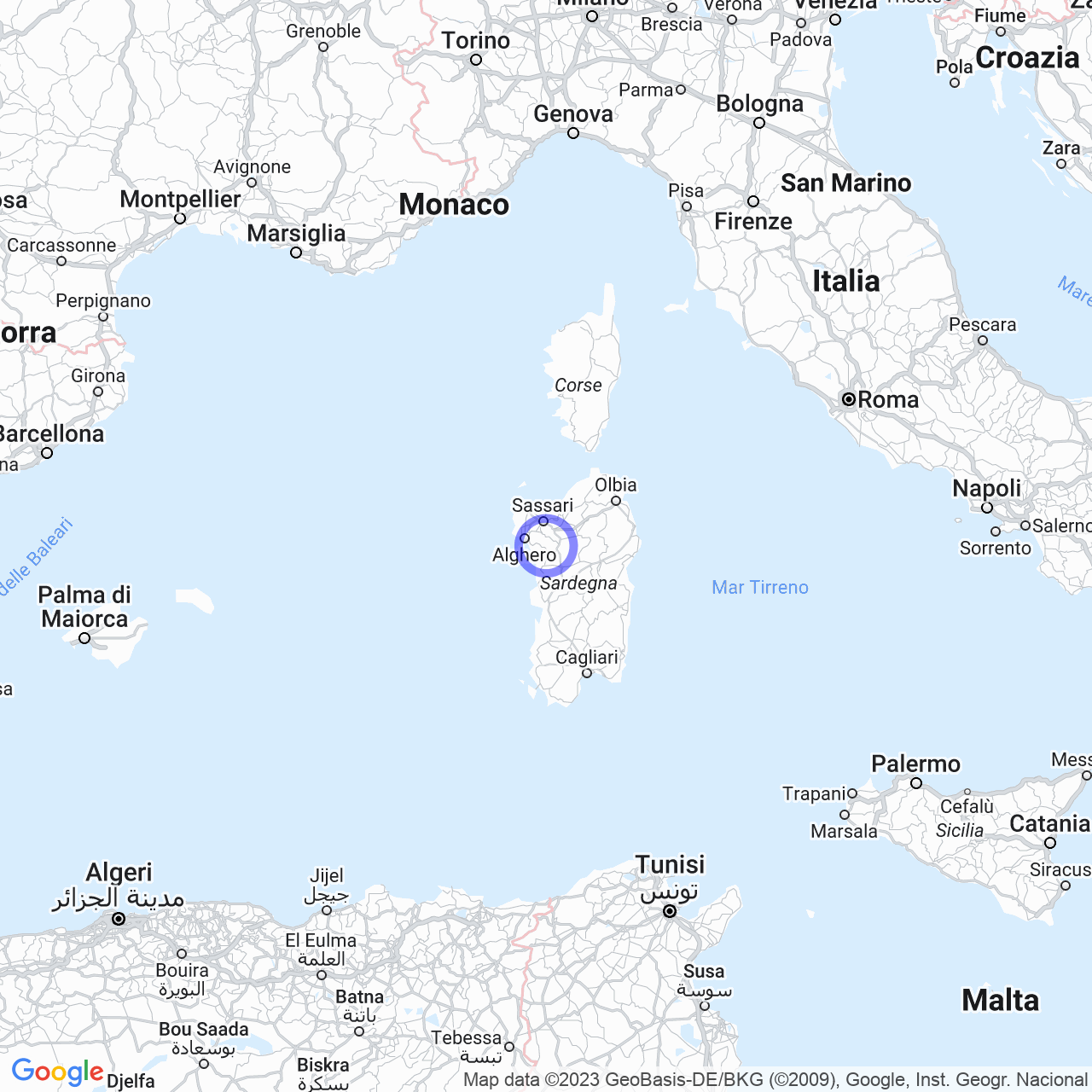Romana
Sassari, the capital of the Province of Sassari in Sardinia
Sassari is a beautiful city located in the northwest of Sardinia. With its 121,270 inhabitants, it is the second largest city on the island, after Cagliari. Sassari is the capital of the homonymous province and also one of the oldest and most historic cities in Sardinia.
The history of the city of Sassari
The city of Sassari has a very ancient history: it was founded by the Romans in the 3rd century BC and later, after the fall of the Western Roman Empire, it was dominated by the Vandals and then by the Byzantines. In the Middle Ages, the city was one of the capitals of the Giudicato of Torres and later of the Giudicato of Arborea. In the fifteenth century, Sassari managed to conquer its independence and established itself as a Republic, becoming the first Italian city to become a republic. Subsequently, the city returned under Spanish rule, until it became part of the Kingdom of Italy in 1861.

The geographical location of Sassari
Sassari is located on the island of Sardinia and covers an area of 546.08 km². It is the largest municipality on the island and the fifth Italian municipality by surface area. The territory extends from the Gulf of Asinara to the Nurra plain, passing through valleys and gorges that make the area very diverse and suggestive.
The climate of Sassari
The city of Sassari enjoys a temperate Mediterranean climate, with mild winters and hot, but ventilated summers. Precipitation is concentrated mainly in the winter and autumn months, but sporadic snowfalls can occur. According to the American magazine Weatherwise, Sassari is one of the 10 cities with the most pleasant climate in the world.
The origin of the name "Sassari"
The origin of the name of the city of Sassari dates back to the twelfth century. However, there is no single explanation for its meaning. According to some theories, the name derives from the Sardinian language, and means "river pebbles", while other authors think that it derives from Latin, and means "stone", given the presence of limestone in the area.
The tourist attractions of Sassari
Those who visit Sassari cannot miss the opportunity to admire its numerous historical monuments, including the Cathedral of San Nicola, the Giudicale and Ducale Palaces, the "G.A. Sanna" National Archaeological Museum, and the civic theater of Sassari, which hosts theater performances and operas.
University and cultural life
Sassari is a university and cultural city with a wide range of opportunities for leisure and entertainment. The University of Sassari offers a wide choice of degree courses and research doctorates attended by students from all over the world. In addition, the city is famous for its numerous cultural events, such as the Carnival of Sassari, Holy Week and the Feast of San Nicola, the patron saint of the city.
Traditional cuisine of Sassari
Sardinian cuisine is famous all over the world for its unique and tasty dishes. Sassari is no exception, offering a wide choice of traditional dishes based on meat, fish and fresh vegetables. Among the most famous dishes are the "panada", a savory pie filled with meat, potatoes and vegetables, the "gattò", a sort of lasagna based on mashed potatoes, cheese and quail eggs, and the "malloru", a delicious Sardinian bread filled with meat, cheese and spices.
The metropolitan network of North Sardinia
In recent years, the city of Sassari has promoted an important initiative to improve the accessibility of the city and its neighboring municipalities. Together with Alghero, Sassari is part of the metropolitan network of North Sardinia, which also includes the municipalities of Castelsardo, Porto Torres, Sennori, Sorso, Valledoria and Stintino. Thanks to this initiative, it is possible to easily reach all these municipalities, taking advantage of an efficient public transport service.
In conclusion, Sassari is a city that offers many opportunities to its inhabitants and visitors. Thanks to its millenary history, natural beauty and culture, Sassari is a city of unique charm that deserves to be visited at least once in a lifetime.
